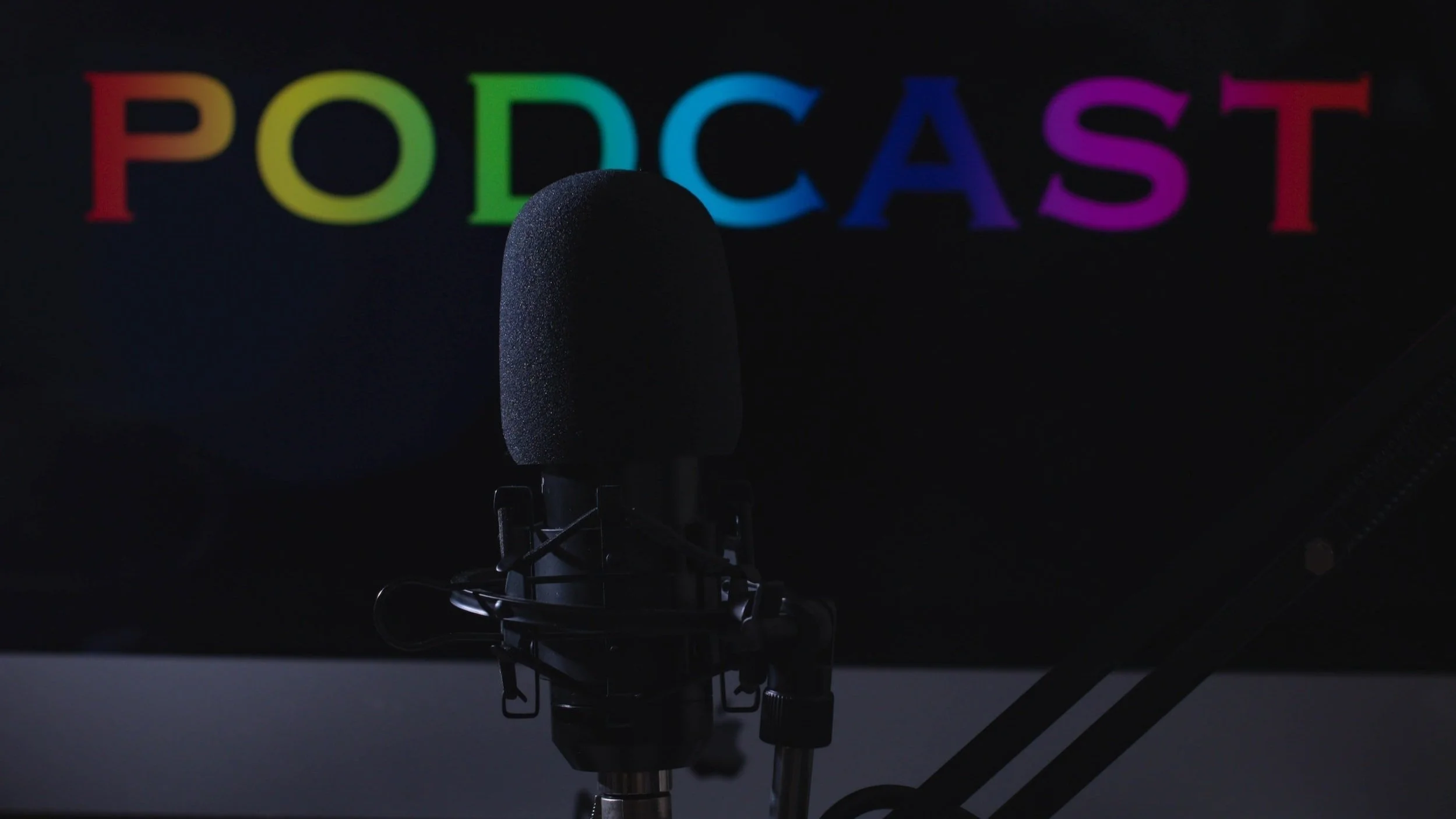The Strategy Behind Launching a Podcast for Your Brand
Have any questions?
Just contact us below, our
team is always ready to help.
Calling all entrepreneurs and influencers! There has never been a more opportune moment for you to venture into the world of podcasting!
In recent years, podcasts have emerged as the auditory equivalent of blogs and have experienced remarkable growth in the industry. Surprisingly, despite this surge, there are currently only 2 million podcasts worldwide, in contrast to over 600 million blogs. This indicates that while podcasts are gaining popularity, they have yet to reach the level of saturation and competitiveness seen in the blogging realm.
In this informative blog, the esteemed team at Bold x Collective will unveil the secret to a triumphant podcast and provide invaluable guidance on how to launch your very own show.
Now, let's delve into the fundamentals. Where should you begin?
Brainstorm Your Podcast
Launching a podcast requires meticulous planning and attention to detail. While it may seem straightforward, there are several crucial factors to consider. The first step is to narrow down the purpose of your podcast.
If you are a freelancer or part of a business, determine whether this podcast will be a passion project or a strategic component of your business aimed at generating profit. Additionally, defining your podcast's theme and target audience is essential. For example, if your podcast revolves around true crime, your niche would cater to crime and mystery enthusiasts. Similarly, a health and fitness podcast would target individuals interested in leading a healthy lifestyle, weight loss, and exercise.
Therefore, it is vital to identify your podcast's purpose and niche before proceeding to the next steps. Once you have clarified these aspects, focus on selecting a unique and captivating name that resonates with your audience and accurately reflects the content of your podcast.
Numerous free websites and tools like Business Name Generator or Get Welder can provide name suggestions if you need inspiration.
Lastly, create a schedule that outlines your release frequency, whether it is weekly, bi-weekly, or monthly, as well as the specific days and times for publishing episodes. Consider whether you will host the podcast alone, with a co-host, or invite guest speakers for each episode. You can even incorporate a combination of these formats, but ensure you establish a clear schedule for each variation.
For instance, you might have weekly episodes, with every other episode featuring a guest (bi-weekly). Develop a routine that enables your audience to anticipate and know what to expect and when to expect it.
Creating Your brand
You don't have to be an expert in copywriting or graphic design to establish your brand. Take a look at descriptions of other podcasts similar to yours or even those from completely different genres that might inspire you.
Use a similar structure as a framework to craft your own podcast description, ensuring it provides a clear introduction to the theme of your show. The next step is to design the cover art for your podcast.
The cover art will be the first impression your audience gets, so it's important to make it captivating and creative.
Fortunately, there are several free tools at your disposal that don't require extensive graphic design skills. Bold x Collective recommends utilizing a fantastic tool called Canva, which allows you to effortlessly combine various features and free images to create an intriguing and enjoyable cover.
Gear up
This stage of podcast launch involves acquiring a high-quality microphone. Before making a purchase, Bold x Collective suggests conducting thorough research and exploring the options available for microphones and editing software. This will assist you in identifying the microphone that aligns with your budget and fulfills your specific requirements.
Recording your Podcast
Prior to exploring recording tools for your podcast, let's explore the concept of scripting. While it may be enticing to have a ready-made script to ensure all your points are covered, it's crucial to consider the time commitment involved in preparing a script.
Unless you plan on creating brief, 5-minute episodes, crafting a script for longer content can result in numerous pages and may be perceived as a time-intensive task by many.
Furthermore, relying solely on a script and reading it aloud may appear convenient and efficient. However, as many of us have experienced, listening to someone recite a script can be monotonous and unengaging.
To avoid the risk of sounding dull and lacking energy, it is recommended to jot down key ideas and concepts in advance. This approach allows you to prioritize topics without the need for extensive script writing and memorization.
When it comes to recording software for your podcast, there is an abundance of options available. For beginners, a highly useful tool called Audacity is available. Audacity enables you to record and edit your podcast or audio content, and the best part is that it's free!
If you're willing to invest more, Adobe Audition is a pricier alternative. It offers advanced features compared to Audacity but comes with a monthly or annual cost. Another recommended tool is Cast, which incurs a small charge. Cast allows you to record yourself and up to 3 guests, which can be beneficial if you frequently host guests on your show.
Similar to the aforementioned tools, Cast also provides editing capabilities. Once you're done editing, you can upload and publish your episodes on various social media platforms. Additional helpful software options include Zoom (commonly used for free recordings), Descript, GarageBand (for Mac users), and Anchor.
Design a template
Usually, every episode of a podcast follows a specific structure to promote consistency for the listeners. Below are a few key concepts that you can include in your podcast structure:
Starting podcast with catchy intro music.
Have an engaging introduction for the podcast to hook your audience.
Go over the topic of discussion for the podcast episode.
Call To Action – promote subscribing, leaving reviews, follow on social media platforms.
Conclude the podcast with catchy outro music.
To ensure every episode you create remains consistent, consider creating a template that you can reuse every time you record. This may look different depending on your episode format, but overall, expect to at least have your intro and outro music ready for every episode.
Keeping consistent with your theme will keep your listener coming back every episode.
Edit
For some, this stage may seem daunting and tiring, but it is crucial to emphasize the significance of this step in maintaining a polished and well-organized podcast.
Utilizing the previously mentioned software, such as Cast, allows you to eliminate any awkward moments in your episode, such as pauses or filler words like 'um.' Moreover, you can enhance your content by incorporating various features, such as fine-tuning the audio quality or adding engaging sound effects.
Upload Your Podcast
With iTunes and Spotify being the largest and most popular platforms for podcasts, Bold x Collective wants to discuss how to upload your podcast on both platforms.
To begin with, it is important to note that setting up a podcast on both iTunes and Spotify is completely free, allowing you to reach a wider audience by releasing your podcast on both platforms.
For iTunes, you will require an Apple ID account to submit your podcast. Creating an RSS feed is also necessary to list your podcast on the Apple Podcasts app. The RSS feed contains metadata such as episode titles, descriptions, and cover art. If you don't have an RSS feed, you can easily create one using RSS for free. Once you have your RSS feed ready, you can submit it on Podcasts Connect. Please note that iTunes may take up to 5 business days to review and approve your submission. However, you can check your Podcasts Connect account for updates anytime.
As for Spotify, you can create an account and log in to your Spotify account to access Podcasters. Upon logging in, you will likely be prompted to click on "get started" and receive a unique link to paste into your RSS feed. An email verification will be sent to the RSS feed's linked email address, containing a code that you need to enter in the "submit" form to activate your account. Once your account is set up, you can review your podcast details and make any necessary changes. After making the changes, you can upload your podcast, and it will be visible on Spotify within a few hours.
Incorporating these steps into your podcast brainstorming process will provide you with concrete details on how to launch a successful podcast. It requires commitment, hard work, and dedication to make your podcast stand out. Before launching your own podcast, it can be beneficial to listen to digital marketing podcasts as well.
Podcasts continue to gain popularity, so if you have strong opinions and factual knowledge about a topic you are passionate about, seize the opportunity to launch your own podcast today and share your voice with the world. If you need further guidance on how to start your podcast, feel free to reach out to Bold x Collective for a complimentary consultation.





